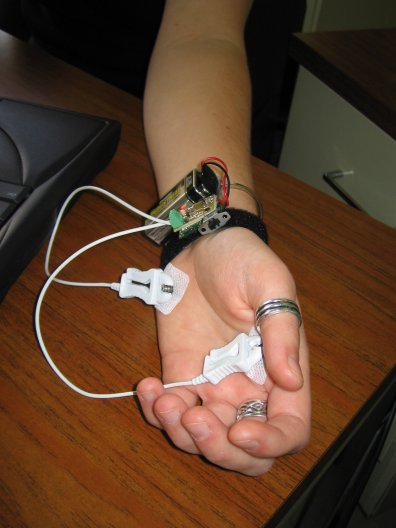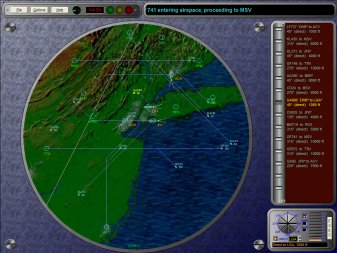|
6 subjects were involved in this experiment. They underwent a series of 6 different scenarii consisting in playing an ATC simulation game (primary task) while responding to incoming instant messages (secondary task). They were first explained basic knowledge on how to play the game, and then shown a demo to see a live example of a scenario. Here is a screen capture of the ATC sim game interface.  The game was available on an independent laptop computer. A second computer was used to provide the chat interface:  Skin conductivity was recorded using a galvanic skin response (GSR) measurement device disposed on the subject's left hand (if right-handed, right hand if left-handed), which was to remain motionless over the entire experiment. Here is a picture of the GSR:  The skin conductivity signal was sent to the experimenter's computer using Bluetooth technology, and Python interpretation code: \\ GSR socket file (python): [download py] The 6 scenarii played combined two levels of workload (low and high) and three levels of flow of IM (none, low, high). Workload was controled by the number of planes (4 planes for the low workload case, and 12 planes for the high workload case). Following are successive screen captures of scenarii with 4 and 12 planes.   Flow of instant messages was subjectively controlled by the experimenter: no IM in the "no IM" case, an IM every minute or two in the "low IM" case and a constant flow of IM during the "high IM" situation. Each message consisted in a question relative to the current situation in the game. Here is a sample of questions asked:  The order of the scenarii was the same for all subjects: 1- low WL - no IM 2- low WL - low IM 3- low WL - high IM 4- high WL - no IM 5- high WL - low IM 6- high WL - high IM This specific order was determined by a pilot study: since the game automatically shuts down when a collision occurs, it was preferable to avoid collisions as much as possible, therefore increasing the difficulty progressively, which is the case with this protocol. |
mas.630
affective computing
16.422
human supervisory control
mas.630
affective computing
16.422
human supervisory control
mas.630
affective computing
16.422
human supervisory control
mas.630
affective computing
16.422
human supervisory control
mas.630
affective computing
16.422
human supervisory control
mas.630
affective computing
16.422
human supervisory control
mas.630
affective computing
16.422
human supervisory control